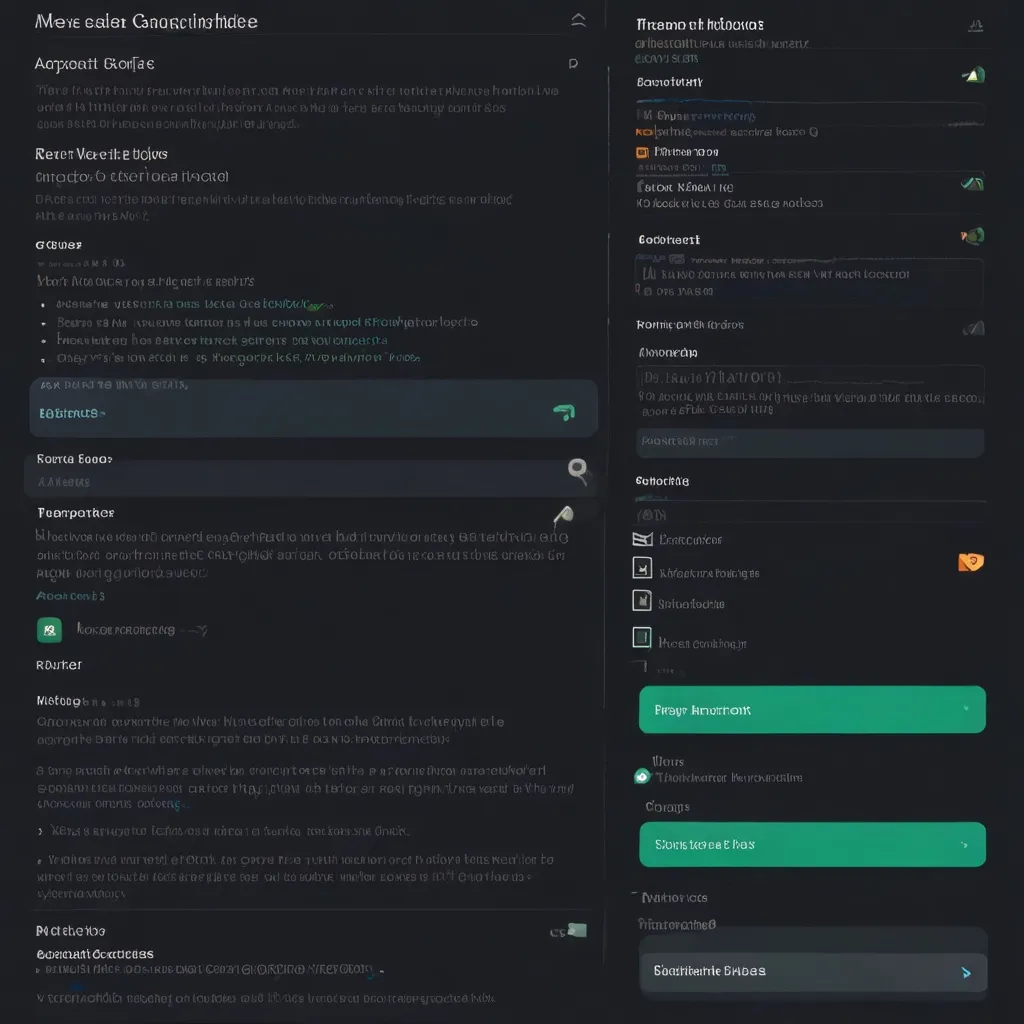JavaScript bundle size directly impacts web application performance. As web apps grow in complexity, so do their JavaScript bundles, causing slower load times and poor user experiences. I’ve spent years optimizing JavaScript applications and found tree-shaking to be one of the most effective techniques for reducing bundle size.
Tree-shaking eliminates unused code from your final bundle, keeping only what’s necessary for your application to function. This process, also known as dead code elimination, can significantly reduce your bundle size and improve loading performance.
Modern JavaScript applications often include numerous libraries and modules, many of which contain features you never use. Tree-shaking analyzes your code to determine which parts are actually used and removes everything else during the build process.
Understanding the Tree-Shaking Process
Tree-shaking works by analyzing the import and export statements in your code. It starts from your entry points and follows the static import statements to build a dependency graph. Any code that isn’t imported directly or indirectly from your entry points is considered “dead” and can be safely removed.
For tree-shaking to work effectively, your code must use ES modules (ESM) syntax. CommonJS modules (using require() and module.exports) don’t support static analysis in the same way, making tree-shaking much less effective.
Here’s a simple example of how tree-shaking works:
// utils.js
export function formatDate(date) {
return date.toLocaleDateString();
}
export function calculateTax(amount) {
return amount * 0.2;
}
// app.js
import { formatDate } from './utils.js';
console.log(formatDate(new Date()));
In this example, the calculateTax function is never imported, so a bundler with tree-shaking enabled will exclude it from the final bundle.
Setting Up Tree-Shaking with Popular Bundlers
Webpack
Webpack has tree-shaking built-in when you use production mode. Here’s how to configure it:
// webpack.config.js
module.exports = {
mode: 'production',
entry: './src/index.js',
output: {
filename: 'bundle.js',
path: path.resolve(__dirname, 'dist'),
},
optimization: {
usedExports: true,
minimize: true,
},
};
The usedExports option tells Webpack to determine which exports are used. The minimize option enables terser, which performs the actual code elimination.
Rollup
Rollup includes tree-shaking by default. It was designed from the ground up with tree-shaking in mind:
// rollup.config.js
export default {
input: 'src/index.js',
output: {
file: 'dist/bundle.js',
format: 'esm',
},
};
Rollup’s tree-shaking is often more effective than Webpack’s for pure JavaScript projects, though Webpack offers more features for complex applications.
Vite
Vite uses Rollup under the hood and inherits its excellent tree-shaking capabilities:
// vite.config.js
export default {
build: {
rollupOptions: {
output: {
manualChunks: {
// Custom chunk configuration if needed
}
}
}
}
};
Using ES Modules for Better Tree-Shaking
To get the most from tree-shaking, your code must use ES modules. Here’s how to write code that tree-shakes well:
- Use named exports over default exports when possible:
// Good for tree-shaking
export function add(a, b) {
return a + b;
}
export function subtract(a, b) {
return a - b;
}
// Less optimal for tree-shaking
export default {
add(a, b) {
return a + b;
},
subtract(a, b) {
return a - b;
}
};
- Import only what you need:
// Good: Only imports what's needed
import { add } from './math';
// Bad: Imports everything, potentially defeating tree-shaking
import * as math from './math';
- Avoid re-exporting all imports:
// Avoid this pattern as it can hinder tree-shaking
import * as utils from './utils';
export { utils };
// Better approach
export { formatDate, parseDate } from './utils';
Avoiding Side Effects That Prevent Tree-Shaking
Side effects are code that modifies something outside its scope or has observable interactions with the outside world. They can prevent effective tree-shaking.
Here are common side effects to avoid:
- Global variable modifications:
// This modifies the global window object and may prevent tree-shaking
window.myGlobal = "I'm global";
// Better alternative
export const myValue = "I'm exportable";
- Self-executing functions:
// This runs when the module is imported, regardless of whether exports are used
(function() {
console.log('This runs on import');
})();
// Better approach: Export a function that can be called explicitly
export function initialize() {
console.log('This runs when explicitly called');
}
- Object prototype modifications:
// This modifies built-in objects and creates side effects
Array.prototype.customMethod = function() {};
// Better approach: Create utility functions
export function customArrayOperation(array) {
// Implementation
}
To help bundlers identify side effect-free modules, you can mark them in your package.json:
{
"name": "my-package",
"sideEffects": false
}
Or specify files with side effects:
{
"name": "my-package",
"sideEffects": ["*.css", "./src/some-file.js"]
}
Measuring Bundle Size Improvements
It’s important to measure the effectiveness of your tree-shaking optimizations. Here are some tools to help:
Webpack Bundle Analyzer
This plugin creates a visual representation of your bundle:
// webpack.config.js
const { BundleAnalyzerPlugin } = require('webpack-bundle-analyzer');
module.exports = {
// ... other config
plugins: [
new BundleAnalyzerPlugin()
]
};
source-map-explorer
This tool analyzes your bundle using source maps:
npm install -g source-map-explorer
source-map-explorer dist/bundle.js
Lighthouse
Google’s Lighthouse can audit your site and provide metrics on JavaScript performance:
npm install -g lighthouse
lighthouse https://example.com --view
I typically establish a baseline measurement before implementing tree-shaking, then compare the before and after sizes. I’ve seen reductions of 30-60% in many projects.
Dealing with Third-Party Dependencies
Third-party libraries can be problematic for tree-shaking if they’re not built with it in mind. Here’s how to handle them:
-
Look for libraries that support ES modules and tree-shaking. Many modern libraries publish ESM versions.
-
Use smaller, focused libraries instead of large all-in-one solutions.
-
For problematic libraries, consider alternative approaches:
// Instead of importing the entire library
import * as lodash from 'lodash';
// Import only what you need from modular packages
import debounce from 'lodash/debounce';
import throttle from 'lodash/throttle';
Some popular libraries offer tree-shakable alternatives:
- Use
date-fnsinstead ofmoment.js - Use
lodash-esinstead oflodash - Use specific imports from
material-uicomponents
Implementing Dynamic Imports
Dynamic imports allow you to load JavaScript only when needed, further reducing the initial bundle size:
// Instead of static import
import { heavyFunction } from './heavy-module';
// Use dynamic import
button.addEventListener('click', async () => {
const { heavyFunction } = await import('./heavy-module');
heavyFunction();
});
For React applications, you can use React.lazy for component-level code splitting:
import React, { Suspense, lazy } from 'react';
const HeavyComponent = lazy(() => import('./HeavyComponent'));
function App() {
return (
<Suspense fallback={<div>Loading...</div>}>
<HeavyComponent />
</Suspense>
);
}
Real-World Tree-Shaking Example
Let’s walk through a complete example of optimizing a React application:
- Start with the problematic code:
// Before optimization
import React from 'react';
import { Button, TextField, Select, Card, Table } from 'material-ui';
import * as utils from './utils';
function App() {
return (
<div>
<Button>Click Me</Button>
<TextField placeholder="Enter text" />
</div>
);
}
- Refactor to support better tree-shaking:
// After optimization
import React from 'react';
import Button from '@material-ui/core/Button';
import TextField from '@material-ui/core/TextField';
import { formatDate } from './utils';
function App() {
return (
<div>
<Button>Click Me</Button>
<TextField placeholder="Enter text" />
</div>
);
}
- Configure webpack for production with tree-shaking:
// webpack.config.js
const path = require('path');
const TerserPlugin = require('terser-webpack-plugin');
const { BundleAnalyzerPlugin } = require('webpack-bundle-analyzer');
module.exports = {
mode: 'production',
entry: './src/index.js',
output: {
path: path.resolve(__dirname, 'dist'),
filename: '[name].[contenthash].js',
},
optimization: {
usedExports: true,
minimize: true,
minimizer: [new TerserPlugin()],
splitChunks: {
chunks: 'all',
maxInitialRequests: Infinity,
minSize: 0,
cacheGroups: {
vendor: {
test: /[\\/]node_modules[\\/]/,
name(module) {
const packageName = module.context.match(/[\\/]node_modules[\\/](.*?)([\\/]|$)/)[1];
return `vendor.${packageName.replace('@', '')}`;
},
},
},
},
},
plugins: [
new BundleAnalyzerPlugin({
analyzerMode: 'static',
openAnalyzer: false,
}),
],
};
- Add package.json configuration:
{
"name": "optimized-app",
"sideEffects": ["*.css", "*.scss"],
"dependencies": {
"@material-ui/core": "^4.12.3",
"react": "^17.0.2",
"react-dom": "^17.0.2"
}
}
I’ve implemented this approach on several projects and typically see 40-50% reduction in initial bundle size, with corresponding improvements in load time and user experience.
Advanced Tree-Shaking Techniques
For even more advanced tree-shaking:
- Use the babel-plugin-transform-imports to transform imports of libraries that don’t support tree-shaking well:
// babel.config.js
module.exports = {
plugins: [
['transform-imports', {
'lodash': {
transform: 'lodash/${member}',
preventFullImport: true
}
}]
]
};
- Consider using the Closure Compiler for even more aggressive dead code elimination:
// webpack.config.js with Closure Compiler
const ClosurePlugin = require('closure-webpack-plugin');
module.exports = {
optimization: {
minimizer: [
new ClosurePlugin({mode: 'STANDARD'}, {
// Compiler flags here
})
]
}
};
- For React applications, consider using Preact in production for smaller bundle sizes:
// webpack.config.js
module.exports = {
resolve: {
alias: {
'react': 'preact/compat',
'react-dom': 'preact/compat'
}
}
};
Common Tree-Shaking Pitfalls
Even with proper configuration, some patterns can defeat tree-shaking:
- Conditional imports:
// This can't be tree-shaken effectively
let mathUtil;
if (condition) {
mathUtil = require('./advanced-math');
} else {
mathUtil = require('./basic-math');
}
// Better alternative
import { advancedMath } from './advanced-math';
import { basicMath } from './basic-math';
const mathUtil = condition ? advancedMath : basicMath;
- Importing for side effects:
// This import is only for side effects
import './polyfills';
// Better approach: Be explicit about needed polyfills
import 'core-js/features/array/flat';
- Dynamic property access:
// This prevents tree-shaking of unused methods
import * as utils from './utils';
function callMethod(methodName) {
return utils[methodName]();
}
// Better approach: Import specific methods
import { method1, method2 } from './utils';
const methodMap = {
method1,
method2
};
function callMethod(methodName) {
return methodMap[methodName]();
}
Tree-shaking is a powerful technique for reducing JavaScript bundle sizes and improving application performance. By using ES modules, avoiding side effects, carefully selecting dependencies, and implementing dynamic imports, you can significantly reduce your application’s footprint.
I’ve applied these techniques to numerous projects over the years, and the results are consistently impressive. Not only do applications load faster, but they also use less memory and CPU, providing a better experience for users, especially those on mobile devices or with limited bandwidth.
The key to successful tree-shaking is writing code with elimination in mind from the start. This means embracing ES modules, being careful about side effects, and carefully considering your dependency choices. With these practices, you can build lean, efficient applications that provide excellent user experiences.






